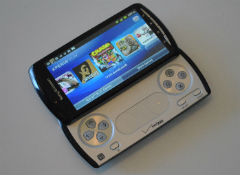 There once was a time when if you wanted to play video games on a TV, you’d hook up a video game console. But as televisions and set-top boxes become powerful enough to stream video and host their own app stores, they’re also becoming capable gaming devices.
There once was a time when if you wanted to play video games on a TV, you’d hook up a video game console. But as televisions and set-top boxes become powerful enough to stream video and host their own app stores, they’re also becoming capable gaming devices.
The latest example is Roku’s announcement that it’ll get Angry Birds, among other games, on a new set-top box unit this summer. Angry Birds will get its own channel, with all the games plus animated shorts and merchandise for sale.
Yes, it’s Angry Birds overload, but that’s beside the point. What matters here is that game developers — particularly those who aren’t part of the traditional console business — are making their way to televisions without the help of Microsoft, Sony or Nintendo. Instead, they’re just going straight to the source. A month ago, I was at a Panasonic press event where the company demonstrated Asphalt 5, a racing game that’s already popular on smartphones and tablets. It’s available on Panasonic TVs as part of a big partnership with developer Gameloft.
Of course, TVs and set-tops still need to solve the controller issue before they can become genuine game machines. No one wants to use a TV remote to play a racing game or a shooter (I chuckled when someone tried to do it at the aforementioned Panasonic event), and Roku hasn’t explained how it will approach this issue with its new hardware.
But that’s not an unsolvable problem. Already, smartphones and tablets provide a more natural input method for televisions, either through infrared or connected apps from TV makers. It’s not a stretch to imagine phones and tablets controlling video games as well. Once that happens, game console makers can really start worrying.
 Good thing Microsoft had a packed line-up of Kinect games to show at its E3 press conference, because last week’s big rumor about live TV on the Xbox 360 turned out to be kind of a dud.
Good thing Microsoft had a packed line-up of Kinect games to show at its E3 press conference, because last week’s big rumor about live TV on the Xbox 360 turned out to be kind of a dud.
 Let’s get something out of the way: I cannot justify buying Sony Ericsson’s Xperia Play. For as much as I love video games, I’m 28. And that seems a bit old to be carrying around a smartphone with its own set of game controls.
Let’s get something out of the way: I cannot justify buying Sony Ericsson’s Xperia Play. For as much as I love video games, I’m 28. And that seems a bit old to be carrying around a smartphone with its own set of game controls. At a pre-E3 press event Thursday night, Konami announced a couple of game compilations that will be playable on both the Sony PSP and the Playstation 3, with the ability to transfer your progress between both systems. And unfortunately, Konami is calling this gimmick “Transfarring.”
At a pre-E3 press event Thursday night, Konami announced a couple of game compilations that will be playable on both the Sony PSP and the Playstation 3, with the ability to transfer your progress between both systems. And unfortunately, Konami is calling this gimmick “Transfarring.” OnLive made a couple announcements today that might help people discover and use the streaming video game service.
OnLive made a couple announcements today that might help people discover and use the streaming video game service. Sony just can’t get back on track. On Wednesday evening, the Playstation Store came
Sony just can’t get back on track. On Wednesday evening, the Playstation Store came  There once was a time when if you wanted to play video games on a TV, you’d hook up a video game console. But as televisions and set-top boxes become powerful enough to stream video and host their own app stores, they’re also becoming capable gaming devices.
There once was a time when if you wanted to play video games on a TV, you’d hook up a video game console. But as televisions and set-top boxes become powerful enough to stream video and host their own app stores, they’re also becoming capable gaming devices. Intel’s plan to revitalize the thin-and-light laptop has been out in the open for
Intel’s plan to revitalize the thin-and-light laptop has been out in the open for  Inevitably, Activision is creating a subscription service for its Call of Duty games, called
Inevitably, Activision is creating a subscription service for its Call of Duty games, called  Just a few months ago, the Playstation 4 was
Just a few months ago, the Playstation 4 was